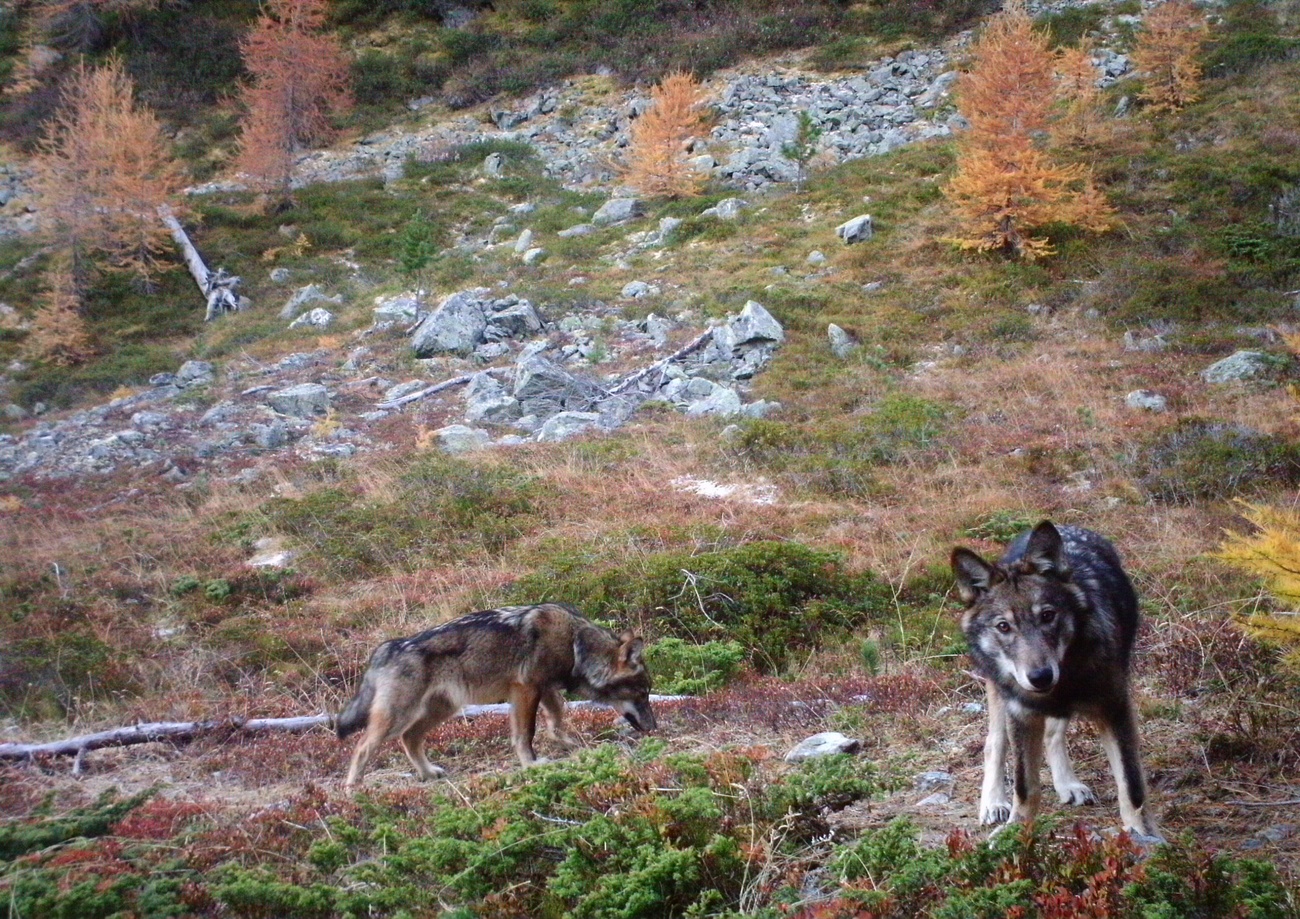
How many wolves are good for Switzerland?

The Swiss Environment Minister, Albert Rösti, has sounded the alarm at the rapidly rising number of wolves, which are growing by around 30% in Switzerland each year. The number of reported wolf attacks on livestock has risen dramatically. This begs the question: how many wolves can peacefully co-exist with humans in the Alpine state?
In 2019 the number of Swiss resident wolves was less than 100, rising to almost 150 in 2021 and 240 last year – while today, more than 300 wolves are roaming Switzerland, spread over 32 different packs.
Switzerland has sufficient wolf-friendly territory to support between 50 and 100 packs, according to the KORA foundation, which monitors Swiss carnivore ecology and wildlife management. Ecologists argue that wolves should be allowed to prosper not only for sentimental reasons – apex predators are the most efficient means of keeping down numbers of herbivore grazers, such as deer.
+ When it’s legal to shoot the wrong wolf
However, a balance must be established between purely ecological considerations and the welfare of farmers, their livestock, and other people who might come into contact with wolves.
A scientific study in 2016 calculated that the Swiss wolf population requires at least 20 packs to be sustainable in the long run, but revisions to the hunting law talk of packs being reduced by up to 70% – down to around 12 packs. The government believes this would leave sufficient wolves to honour its obligation as a signatory of the Bern Convention on wildlife protection to safeguard the predator.
This figure was presented in a draft update to Swiss hunting laws, prompting conservation groups to drop heavy hints of a legal challenge. “The will of parliament and of the people to implement a balanced hunting and protection law is being ignored,” said the conservation group Wolf Switzerland.
“The whole idea of killing wolves or even managing large carnivore populations is currently one of the most divisive issues in Europe,” John Linnell, a senior scientist at the Norwegian Institute for Nature Research, told SWI swissinfo.ch earlier this year.
Cost to taxpayer
On one side of this dividing line, farmers point to a five-fold increase wolf attacks on sheep, cows and goats in Alpine pastures since the turn of the Millennium when wolves started to multiply in Switzerland.
And this also brings financial consequences for taxpayers as farmers are compensated for livestock killed by wolves and for installing anti-wolf measures to protect their flocks.
The Swiss Farmers’ Association complains that herd protection funding has dropped (a claim the Federal Office for the Environment refutes). “How much money do we want wolves to cost? We have clearly exceeded the pain threshold. Switzerland is too small for the 300 wolves that currently exist. The wolf population must be reduced,” the association stated by email to SWI swissinfo.ch.
Balancing act
Parliament has already decided to allow the culling of wolves if they are deemed a threat. The original proposal was struck down by Swiss voters in 2020, forcing a revision last year that includes more restrictions on shooting wolves whilst retaining the principle that they can be shot before attacking livestock.
The Federal Office for the Environment would not give a precise number of wolves that could sustainably live in Switzerland. “The wolf population in Switzerland is increasing rapidly. This poses major challenges, particularly for alpine farming with sheep and goats,” it said in an emailed statement to SWI swissinfo.ch.
“Without interventions, the wolf population in Switzerland will increase by around 30% per year. Switzerland wants to help ensure that the Alpine wolf population as a whole is not endangered.”
In the late 19th century, Swiss wolves were hunted to extinction.
A few lone wolves occasionally wandered into Switzerland in the 20th century, but the first returning resident wolf did not arrive until 1995 – a lone wolf that came over the border from Italy and stayed.
It was not until 2012 that the first wolf pack established its presence in modern times. There are now 32 packs containing more than 300 wolves.
Switzerland ratified the Council of Europe’s ‘Convention on the Conservation of European Wildlife and Natural Habitats’ (Bern Convention) in 1981. At the time, there were no wolves resident in Switzerland.
A change to the Swiss Hunting Act allows the culling of packs or parts of packs when agriculture is threatened. Game wardens can also shoot wolves that approach inhabited areas and humans in a threatening manner, or against which flock protection measures are ineffective.
Cantons must obtain the approval of the Federal Office for the Environment before culling wolves, which will be authorised during a time window from the start of September to the end of January.

In compliance with the JTI standards
More: SWI swissinfo.ch certified by the Journalism Trust Initiative


















![The four-metre-long painting "Sonntag der Bergbauern" [Sunday of the Mountain Farmers, 1923-24/26] had to be removed by a crane from the German Chancellery in Berlin for the exhibition in Bern.](https://www.swissinfo.ch/content/wp-content/uploads/sites/13/2025/12/01_Pressebild_KirchnerxKirchner.jpg?ver=1ea8acae)











You can find an overview of ongoing debates with our journalists here . Please join us!
If you want to start a conversation about a topic raised in this article or want to report factual errors, email us at english@swissinfo.ch.